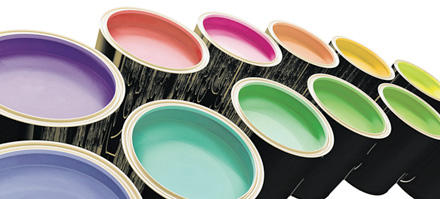-
January 10, 2011 - Volume 89, Number 2
- p. 16
Cover Story
 Shutterstock
Shutterstock
- World Chemical Outlook
- Cleantech
- Electronic Materials
- Finance
- Fine Chemicals
- Inorganics
- Instrumentation
- Paints And Coatings
- Petrochemicals
- Pharmaceuticals
- Specialties
- Asia
- Canada
- Europe
- Latin America
- Middle East
- United States
MARKETS
REGIONS
Topics Covered
Paint sales will show little improvement in 2011 in the developed economies of Europe and the U.S., where the pace of economic recovery is slow, but they will continue to barrel ahead in the fast-growing countries of Asia and South America, says Phil Phillips, managing director of Chemark Consulting.
In the U.S., moribund residential and commercial construction activity means that the do-it-yourself component of the architectural paint market will fare better than the contractor component. But overall paint sales will lag behind the low-single-digit increases in GDP, Phillips says. One bright spot is that an increase in U.S. auto production from about 10 million in 2010 to nearly 13 million in 2011 should lift new-vehicle coatings sales.
European coatings sales will be hampered by the economic problems in Portugal, Ireland, Greece, and Spain. But developing Asian countries, and particularly China, “will just keep on booming,” Phillips says, as factory output grows and middle-class buying power increases both industrial and construction-driven coatings sales.
Guillermo Novo, vice president of Dow Chemical’s coating materials business, expects Chinese demand for paint materials this year to rise 8–10%. Other developing economies of Asia and South America should experience growth rates in the 4–7% range. As consumers in the developing world move up the economic ladder, they are also buying value-added paints with benefits such as mold and mildew resistance, Novo adds.
Strong demand from developing economies has also created tight supplies of the widely used paint pigment titanium dioxide, both Novo and Phillips note. Dow plans to introduce new raw materials that will help paint makers extend their supplies of the increasingly costly opacifying pigment.
Shortages of acrylic monomers, used to make a variety of architectural and industrial paints, plagued paint makers in the spring of 2010 as the global economic recovery got under way. The supply situation is back to normal “from our side,” Novo says about Dow. But Phillips warns that acrylic acid capacity taken down in anticipation of a long slowdown still hasn’t completely come back on-line and will lead to monomer shortages through June of this year.
Eric Kaiser, marketing director for Arkema’s emulsion systems business, says he expects acrylic monomers and resins to remain in tight supply in 2011. Arkema is working with customers to anticipate their needs, especially when demand hits its seasonal peak in the second quarter.
- Chemical & Engineering News
- ISSN 0009-2347
- Copyright © 2011 American Chemical Society
Services & Tools
ACS Resources
ACS Careers
ACS is the leading employment source for recruiting scientific professionals. ACS Careers and C&EN Classifieds provide employers direct access to scientific talent both in print and online. Jobseekers | Employers
» Join ACS
Join more than 161,000 professionals in the chemical sciences world-wide, as a member of the American Chemical Society.
» Join Now!
